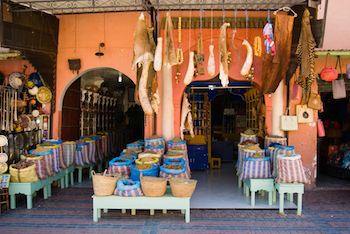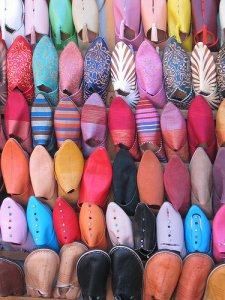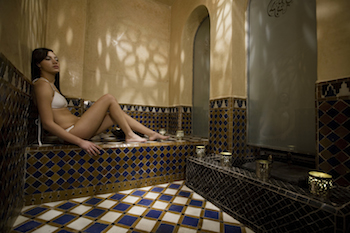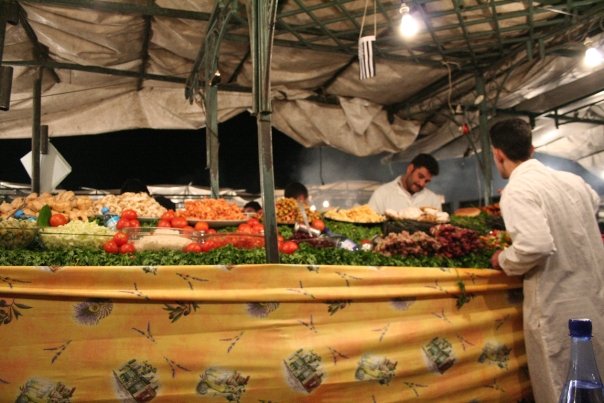Shopping in Morocco is a unique and exciting experience. No visit to Morocco would be complete without exploring the medinas (walled cities with maze-like streets) of Marrakesh, Fès and Essaouira. Unlike shopping in the West, where people tend to visit local retailers, in Morocco shopping involves visiting the old medina, and touring the various souks and marketplaces. In the souks of Morocco, travelers will find ranging from traditional Moroccan clothing, fabrics, baboosh (shoes), Moroccan cuisine, and Berber carpets. Since most foreign currencies are strong in comparison to the Moroccan dirham, you can go on an extensive shopping spree and purchase various local Moroccan handicrafts such as Moroccan leather work, Berber carpets, silver jewelry, gold and copper along with ancient Fes embroideries and basketwork.
Souks and markets are a major feature in Moroccan life and one of Morocco’s greatest attractions. Each major city and town in Morocco has a special souk quarter. Villages in the country side also have local souks which are usually held one day each week in an open field or outside the towns kasbah walls. Large cities like Marrakech and Fès have labyrinths of individual souks (each filling a street or square that is devoted tone particular craft). The cities of Marrakesh, Fès and Essaouira are famous for their beautiful souks which serve as Morocco’s posh and huge shopping centers. Some of the best buys in Morocco are dates, leather ware, handicrafts, Berber carpets, pottery, wood carvings, traditional dress (djellabas) and various food products.
Souks and markets are also a daily destination where locals shop for fresh meat, vegetables, household goods and other items that Americans for example, purchase at Whole Foods, Trader Joes, Wal-Mart or Target. In the country side of Morocco, you can find large numbers of weekly souks (markets). A new alternative to souks in Morocco is Marjane, a Moroccan hypermarket chain, found in large cities like Marrakesh, Casablanca, Agadir, Fès, Tétouan and Tangier . Marjane is the “Moroccan Target” and sells a wide variety of items such as food, clothing, liquor, electronics and other household goods. Whether or not you are a big shopper, visiting a souk is a cultural experience that should not be missed on a trip to Morocco.
For more information about Shopping in the Souks and Markets of Morocco.



























